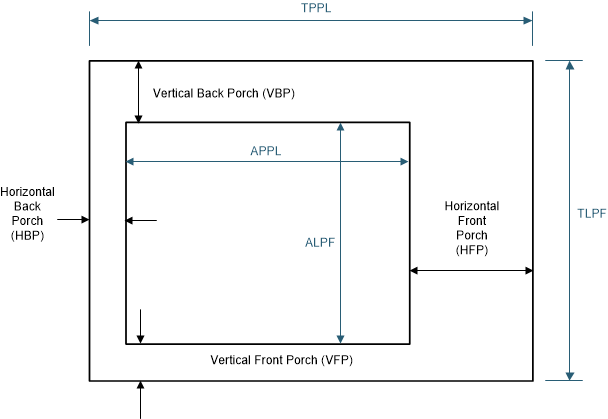DLPS222A December 2021 – February 2023 DLPC4420
PRODUCTION DATA
- 1 Features
- 2 Applications
- 3 Description
- 4 Revision History
- 5 Pin Configuration and Functions
-
6 Specifications
- 6.1 Absolute Maximum Ratings
- 6.2 ESD Ratings
- 6.3 Recommended Operating Conditions
- 6.4 Thermal Information
- 6.5 Electrical Characteristics
- 6.6 System Oscillators Timing Requirements
- 6.7 Test and Reset Timing Requirements
- 6.8 JTAG Interface: I/O Boundary Scan Application Timing Requirements
- 6.9 Port 1 Input Pixel Timing Requirements
- 6.10 Port 3 Input Pixel Interface (via GPIO) Timing Requirements
- 6.11 DMD LVDS Interface Timing Requirements
- 6.12 Synchronous Serial Port (SSP) Interface Timing Requirements
- 6.13 Programmable Output Clocks Switching Characteristics
- 6.14 Synchronous Serial Port Interface (SSP) Switching Characteristics
- 6.15 JTAG Interface: I/O Boundary Scan Application Switching Characteristics
-
7 Detailed Description
- 7.1 Overview
- 7.2 Functional Block Diagram
- 7.3 Feature Description
- 7.4 Device Functional Modes
- 8 Application and Implementation
- 9 Power Supply Recommendations
- 10Layout
- 11Device and Documentation Support
- 12Mechanical, Packaging, and Orderable Information
Package Options
Mechanical Data (Package|Pins)
- ZPC|516
Thermal pad, mechanical data (Package|Pins)
Orderable Information
11.2.1 Video Timing Parameter Definitions
- Active Lines Per Frame (ALPF)—Defines the number of lines in a Frame containing displayable data: ALPF is a subset of the TLPF.
- Active Pixels Per Line (APPL)—Defines the number of pixel clocks in a line containing displayable data: APPL is a subset of the TPPL
- Horizontal Back Porch Blanking (HBP)—Number of blank pixel clocks after Horizontal Sync but before the first active pixel. Note: HBP times are reference to the leading (active) edge of the respective sync signal
- Horizontal Front Porch Blanking (HFP)—Number of blank pixel clocks after the last active pixel but before Horizontal Sync.
- Horizontal Sync (HS)—Timing reference point that defines the start of each horizontal interval (line). The absolute reference point is defined by the “active” edge of the HS signal. The “active” edge (either rising or falling edge as defined by the source) is the reference from which all Horizontal Blanking parameters are measured.
- Total Lines Per Frame (TLPF)—Defines the Vertical Period (or Frame Time) in lines: TLPF = Total number of lines per frame (active and inactive).
- Total Pixel Per Line (TPPL)—Defines the Horizontal Line Period in pixel clocks: TPPL = Total number of pixel clocks per line (active and inactive).
- Vertical Back Porch Blanking (VBP)—Number of blank lines after Vertical Sync but before the first active line.
- Vertical Front Porch Blanking (VFP)—Number of blank lines after the last active line but before Vertical Sync.
- Vertical Sync (VS)—Timing reference point that defines the start of the vertical interval (frame). The absolute reference point is defined by the “active” edge of the VS signal. The “active” edge (either rising or falling edge as defined by the source) is the reference from which all Vertical Blanking parameters are measured.
 Figure 11-1 Timing Parameter
Diagram
Figure 11-1 Timing Parameter
Diagram